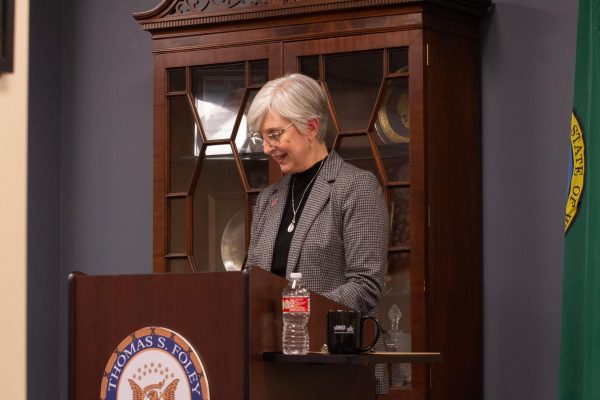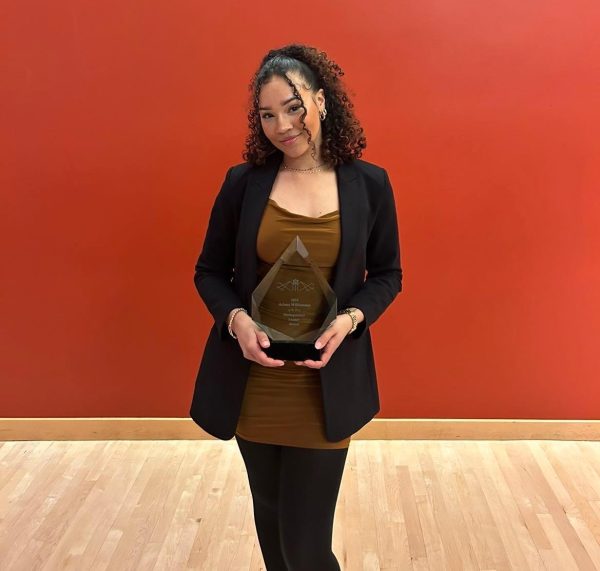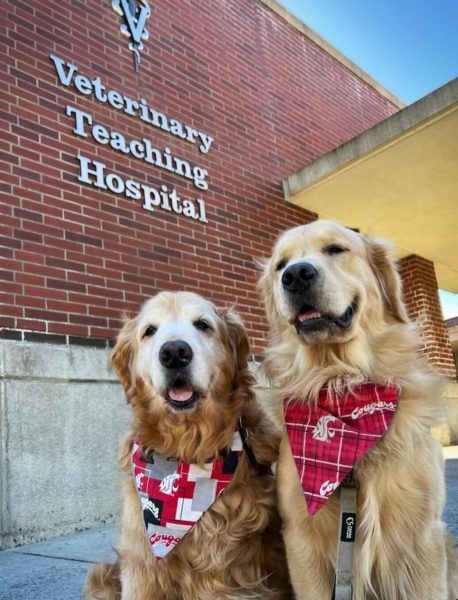Hidden treasures
November 14, 2013
Birds, bears and a “pickle collection” are just a few of the items that make the Charles R. Conner Museum what it is, Curator Kelly Cassidy said.
Located on the bottom floor of Abelson Hall, the museum’s public exhibit contains more than 700 taxidermied animals, including four North American bighorn sheep and a Bactrian (two-humped) camel.
“But that’s not what we consider the main part of the museum,” Cassidy said.
At the opposite end of the hall, museum staff maintain a vast collection of more than 65,000 specimens for research and teaching purposes.
In addition to a wide range of furry and feathered creatures, the museum houses a collection of fish, reptiles and amphibians stored in jars of ethanol – the “pickle collection.”
“I wish I could spend more time on the exhibit,” Cassidy said. “But the research collection sucks up most of our time.”
Cassidy works with several volunteers, undergraduates and graduate students, who prepare specimens to be cataloged.
Amanda Overland, a recent WSU graduate, works as a museum assistant. During the past several months, Overland has cataloged more than 9,000 specimens.
“What makes the museum specimens valuable is that they are documented,” Cassidy said. “They have associated information.”
Each specimen in the museum is tagged with its weight and gender, the location and condition in which it was found and other information that might be useful to researchers.
“I think that’s the coolest part about the museum,” Overland said. “Everyone just thinks we have a bunch of stuffed animals, but we actually use them to teach and do research.”
Richard Berl, a WSU graduate student and research assistant at the museum, said it sparks scientific interest and curiosity.
“People really enjoy being able to see and touch all these animals that you normally wouldn’t get to see out in the open,” Berl said. “I think outreach and public education are a big part of research and science, and that’s a major goal of the museum.”
In 2011, the museum received a three-year, $400,000 grant from the National Science Foundation (NSF).
The grant enabled the museum to purchase two “ultra-cold” freezers that store tissue samples at minus 80 degrees Celsius.
“In the old days we had to take the animals, skin them and stuff them with cotton,” Cassidy said. “We still do that, but now we have the ability to store hearts and livers and organs and stuff for whoever wants to study them later on.”
Cassidy explained that the museum serves as a physical database of animal specimens. Researchers use tissue samples and “study skins” – animal pelts stuffed with cotton – to collect a wide range of information.
For each species in the research collection, the museum maintains a complete skeleton that archaeologists can compare to bone fragments they find elsewhere.
Some specimens were donated by retired professors, other museums and academic institutions in Washington and Idaho, while others were hunted or trapped intentionally. Then, some are animals killed by drivers and brought in by nearby residents.
“Like most museums, we get the most number of specimens from the city where we live,” Cassidy said. “But we don’t want a museum full of animals from Pullman.”
The research collection consists primarily of animals from the Pacific Northwest but includes a large number of elephant teeth, several birds from Uganda and other specimens from around the world.
Cassidy said lack of space has been an issue as the research collection continues to grow. Using funding from the NSF grant, the museum purchased 60 new metal cases to store specimens.
“We managed to stack more cases in here, but we’re pretty much at our limit now,” she said. “We’ve talked about applying for another grant to help manage our other collections.”

















